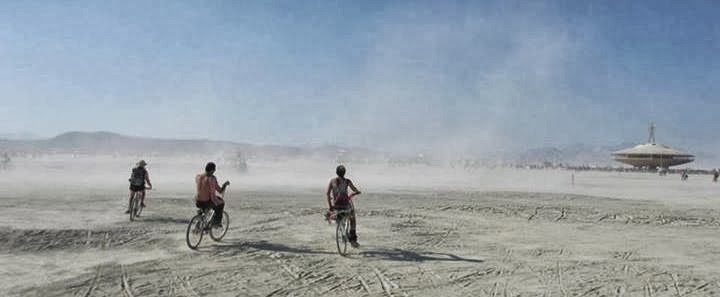The performance begins with a huddle of men in dark t-shirts, not-so-subtly assembling near a platform that might be a stage. There’s definitely a bulk to the group, but I’d like to think that we carry a certain nonchalance which will take our assembled guests off-guard. With a huge grin on his face, ready to burst from the excitement of the last few months, Dom raises his arm and mouths to the count of *one, two, three, four….*
“ALLE” we chant, swinging our fists in a jovial, encouraging fashion, bringing conversation around the room to a stand-still. “ALLE” we repeat, bumping, shuffling and drifting our ways towards our prearranged positions in front of the stage. “ALLE” we boom, growing more confident now that this is actually happening. “A-LE” we echo, settling into position: a large group of tenors to the left, a thin slice of baritones in the centre and a gruff wedge of basses to the right.
Here we are, Chaps Choir, on the cusp of our first performance less than three months after we all first met. It's a début at the
Union Chapel no less, albeit in the second room. The main space is currently being filled by rapturous applause for a pint-sized youth choir in red t-shirts.
I think it’s fair to say there’s some apprehension amongst the Chaps at this point. Many of us have never sung in public before - at least not whilst sober or in tune – a fair few have only made it to about half the sessions and, although no-one had said it out loud, the pre-show rehearsal was pretty awful. To top it all off, those kids next door are sounding pretty good. Now we have a room full of 150 friends, family, wives and girlfriends who have turned up to see what we've been up to every Thursday night since April. I've even invited some friendly clients along. Oh, and there are members of at least two other choirs here to support us. No pressure then.
We can’t really mess-up the Finnish reindeer chant so long as we all keep a close eye on Dom, our beat-boxing choirmaster. It‘s a nice number to warm up with and we’re re-assured by the surge of applause that greets its final notes. We can do it! We are doing it! Huzzah!
The real challenge is the first lyrical song of the set, a harmonized version of The Logical Song by Supertramp (yes, Supertramp). If you don’t know it (where were you in 1979?), the verses are essentially lists of four syllable words that end in –cal, -ble and –ful; all easily confused and bloody difficult to remember. We also have the task of expressing the increasingly unhappy sentiment of the song’s lyrics, from the gentle a optimism of youth to the crushing disaffection of adulthood - all followed by a breathless ahhhhhhh--ah-ahh-ahhhhh-ah-ah-ahhh in the chorus.
As we hit the second verse I realise that we sound better than we've ever sounded before. Something’s just clicked. I can feel the resonance of our voices working together in harmony. We've nailed it. The crowd goes wild. This feels great. We ease into How Soon is Now with confidence, slowly building the energy as we creep towards the angst-ridden chorus... “I am hu-man and I need to be lo-o-o-v-ed” (Chaps can have feelings too, you know).
There’s a moment in the audience participation section of Cry Me A River when I question the wisdom of inviting members of two other choirs to watch us, but we pull it back with a powerful and very male sounding ending. The final triumph is a gentle but powerful rendition of The Book of Love by The Magnetic Fields, prompting a guffaw of giggles from the largely female audience after the first line - “The book of love is long and boring” - but rapturous applause to follow. We've done it!
There are cries for more, which we don’t have, so we sing Logical Song again with gusto: “Please tell me who I a-a-a-m, who I a-a-a-m”. More applause. We shake hands, we congratulate, we slap each other on the back. Some of us even hug. My wife (aka my greatest critic) who has banned me from singing in the house, tells me that we sounded brilliant.
We all arrived at Chaps in different ways, some through MeetUps or Facebook, a few through other choirs and many just through word of mouth. When we first croaked, clapped and squawked our way through Under the Bridge, I don’t think many of us imagined that we’d be performing to an audience by this point, but we did all enjoy the experience from the get-go.
I’m usually skeptical about jumping onto the latest bandwagon (choirs were so 2011 aren't they? Gareth Malone and all that), but for someone who doesn't know how to control his vocal chords the idea of learning in a safe environment (a huddle of other blokes behind whom I could hide if things went wrong) was very appealing. The revelation that everyone was so friendly and keen to talk about the challenges and rewards of singing together made it a highly enjoyable social-bonding experience. The fact that The Craft Beer Company has a pub on the other side of the road was the icing on the cake.
None of it would have been possible without the energy, enthusiasm and optimistic ambition of our choirmaster
Mr Dominic Stichbury. I went to school with Dom many years ago and used to play in bands with his little brother Jim, so it’s been a real pleasure to reconnect with him at a point at which he’s realising his potential to make things like this happen. I hope we've done him proud and eventually go on to sound like a choir who people might like to listen to.
The week of our first performance I saw two reports in the news that affirmed my own positive experience. The first,
reported in The Independent, showed that singing in harmony with others actually has a positive effect on our heart rate in a similar way to yoga breathing. Having tried both, I have to say that singing is much more fun, so that’s good news. The second, from a group called
Vocality claims that bringing people together to sing can foster cohesion and better understanding in divided communities. Chaps, as you might expect, is mostly made up mostly of middle-class media types at the moment, but it is open to all and it's definitely brought us together. Now if only there were enough choirmasters to go round...
Chaps Choir is open to all with a Y chromosome. It reconvenes in Islington to learn a new batch of songs from September 19. If you’d like to give it a go before then, Dom’s also running day-long workshop with the Chaps on 17 August. For more info visit chapschoir.wordpress.com










